1) Flatten a ball of clayThat’s overly simplistic and it hits on why I chose to write this blog the way I do. The devil is in the details.
2) Cut into a triangle
3) Fold
4) Shape
The biggest detail I left out above is that I left the clay partially cure between steps 1 and 2. If you use this technique without letting the clay thicken at least a little, the tip of the ear will flop over and the whole thing is likely to fall off.
I can’t tell you exactly how long you should wait between steps 1 and 2. It averages around an hour, however multiple factors can dramatically change the clay’s cure rate. Mixing with water, the age of your clay (newer clay is significantly fresher), the amount of clay mixed, it’s shape while curing, and your local weather can all affect the cure rate of the clay.
After I mix the two parts, keep an eye on the clay. I check its status every 15 minutes or so. My clay is ready to go before it’s rigid enough to crack when bended. Ideally, I want to be start sculpting about 15 minutes before it hits the cracking stage. After a while you’ll get a feel for what the ideal stage of curing feels like. I recommend mixing a couple test batches and play around with them before you try to sculpt your first ear.
When the clay is cured just enough to work with, I pinch it into a flat disc. Thickness will vary by scale with a traditional scale ear being roughly a 1/16th of an inch think. Use the tip of the ear as a guide for how thick you need the disc to be.
I cut the disc into a modified triangle shape. In geometry, I think it’s called a bullet tip. I also leave excess clay at the base of the ear:
Next, I smooth the cut edges of the shape with a little water. I then turn my attention to the tip of the ear. The tip should curve slightly inward. Photo references are really, really helpful for this step.
My model's ear tips should reflect it's breed.
Finally, we make it to step three. I fold over/roll the excess clay I left at the bottom of the ear.
My goal here is to shape the round, hollow middle portion of the ear.
Fuss with the shape, but don’t worry about the excess blob the ear is still attached to. Next, I flare out the very slight edge of the ear. This is what I'm aiming for:
Feel free to poke and prod for a little while at this point. I go back to my photo references and focus on getting the shape to match.
Now I'm ready to pinch or cut off that excess blob of clay. It should look like this:
Set the ear aside to dry. You can stick the ear to your model to dry or gently lay it on a flat surface with the front side down.
After the ear has fully cured (3 to 4 hours after you first mixed the clay), I’ll glue the ear in place. Even if I stuck the ear to the head already to dry, I’ll want to take it off and reattach it because it’s current bond to plastic is tenuous at best. A stiff breeze could knock it off the head. I use a small drop of super glue to secure it, and place it aside for a few minutes to let the glue dry. I'll toss on a pinch of soda if it's conveniently nearby.
Now, I need to add the bottom of the bulb of the ear. I mix a small amount of clay and apply it to the base of the ear immediately (i.e. no need to let it cure before I use it.) I add clay all the way around the ear and fill in a smooth transition from the ear to the head. I often find myself building a little bit of clay up on the back of the ear to form the full shape of the ear.
If this whole process seems really simple now...well it's actually kinda is. The hardest part is getting a very realistic shape to the ear, but that gets easier with practice.

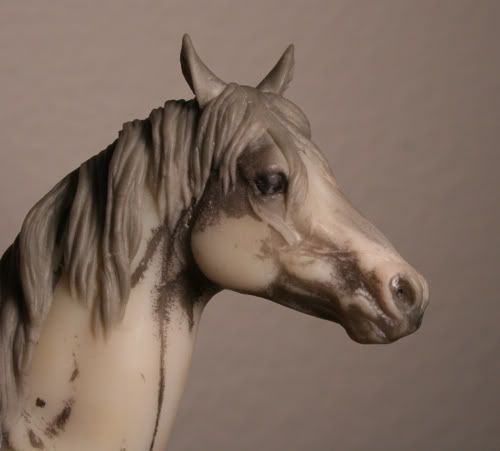

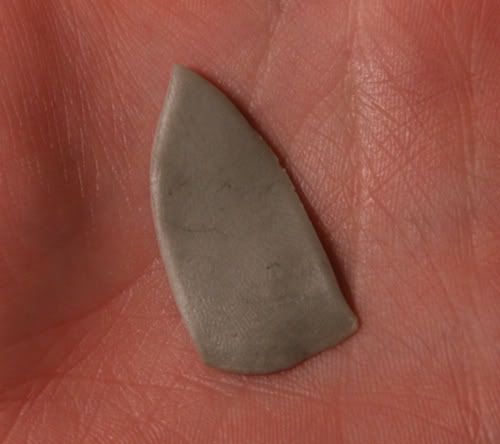





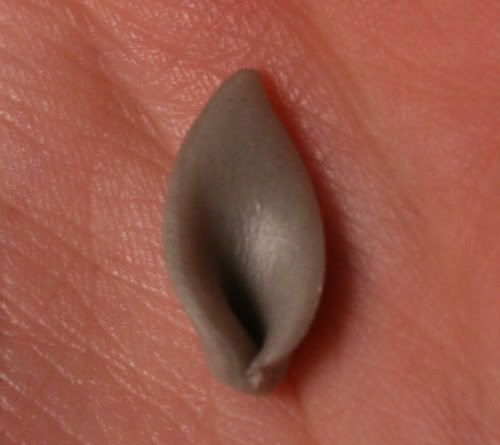
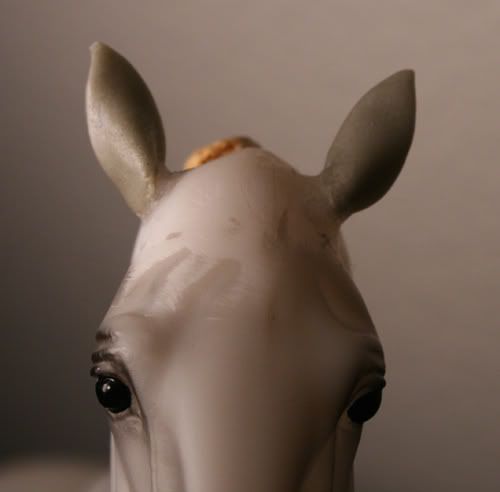
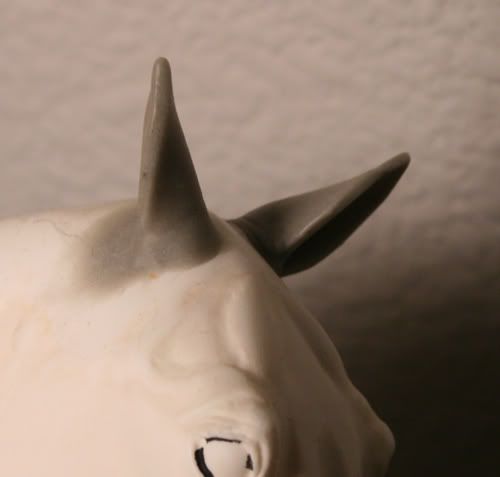




10 comments:
Hello I would just like to say, Thank you for your blog, it has inspired me to have a go at some more drastic customs than I would normally do.
Oh wonderful! Thanks for this tutorial (and all the other great ones)
This really makes me want to knock the ears off of some finished remakes of mine now... Maybe I'll do. *g*
Holy Moly !!!
Awesome tutorial !!!!
More more more !!! ;o)
:o Oh yes, this is going to be VERY helpful to me in the future, I can just tell!
Thank you so much! :D
Thank you for posting this. Now my poor Arab mare will be able to hear again. It's a miracle!
Is it weird that I'm bothered by the photo of my nail? I actually bothered to paint them yesterday (just cause I felt like looking purdy) *yet* I went straight from the barn to sculpting/writing.
Horse ownership: it means you'll never be fully polished and presentable again. ;)
Thank you SOOOOOO much, I always have a hard time with the ears.
Thank you, thank you, thank you!! I have been trying to resculpt ears on a NSH to turn him into Sultan's Santana, and it hasn't been working. Thank you!!!
Oh this is just GENIOUS! So many "artists" refuse to share their knowledge and hold on to it so tight that it'll crack any minute. This, and many other fantastic tutorials, are really helping me to understand more on the subject of remaking horses like this. THANK YOU!
I'm just tickled that y'all are getting something out of these tutorials.
If you've ever met me (and I hope a few of y'all will at Breyerfest this year--I will be in the Artisan's Gallery) you may have noticed I looove to talk about what I do. I think a lot of artists hold out for the day they will write a book, I just gave up early. ;)
Post a Comment